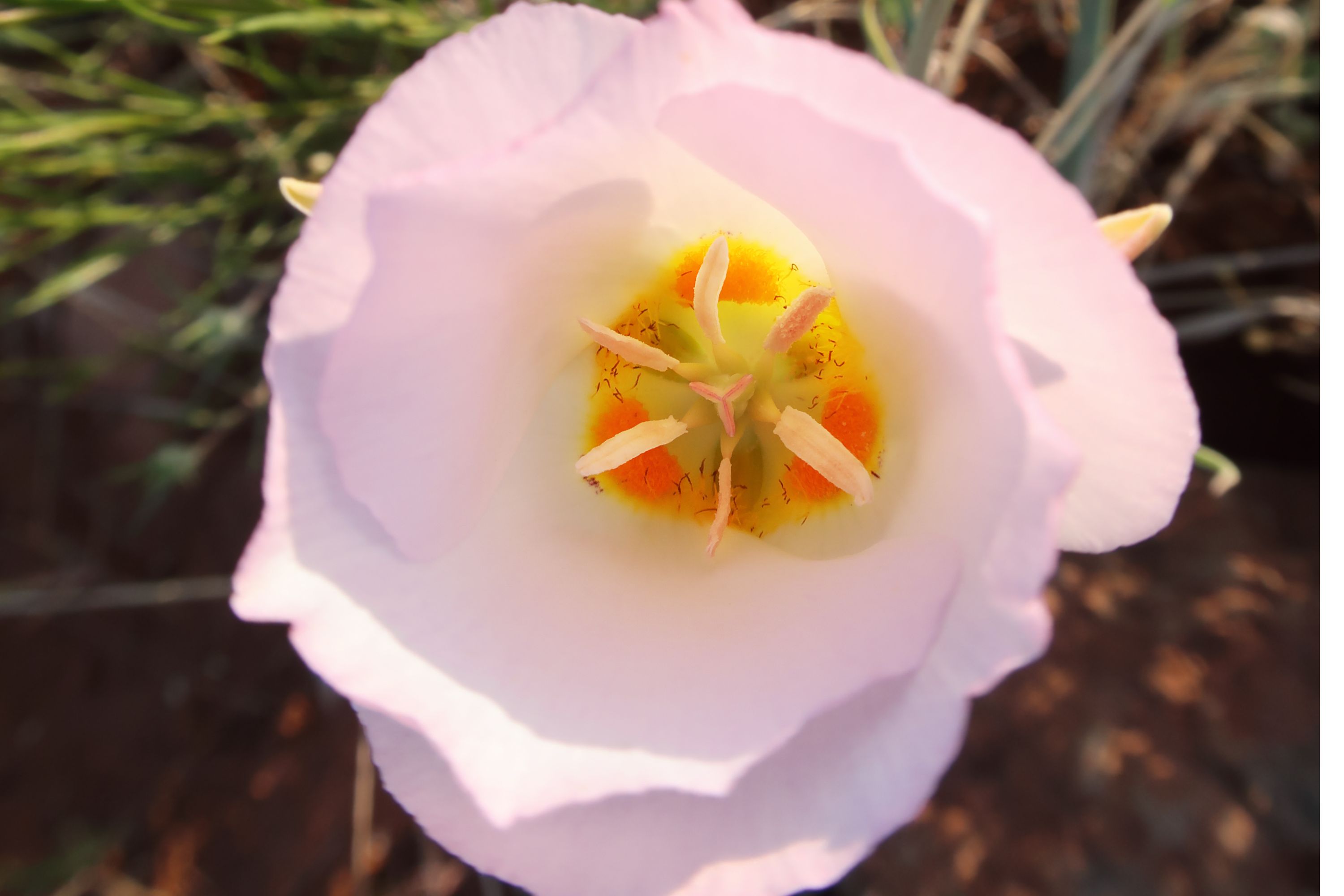Winding Mariposa lily
(Calochortus flexuosus)

Description
Calochortus flexuosus is a species of lily known by the common names winding Mariposa lily and straggling Mariposa lily. This is a bulbous perennial wildflower native to the Southwestern United States, the Mojave Desert in California, and northern Mexico. It is most often found in desert scrub, growing up through low shrubs. Calochortus flexuosus is mainly one long naked stem with only one or two small leaves toward the base. The stem may branch and is usually winding and bent or curving. At the end of the stem is a showy flower in shades of pink or lavender to white, with solid yellow and stripes or spots of white and red at the base of each petal. Calochortus flexuosus was published as a new species by Sereno Watson in 1873, based on material collected by Ellen Powell Thompson in 1872 in the vicinity of Kanab, Utah, during the US Topographical and Geological Survey of the Colorado River (led by John Wesley Powell). Her specimen, the holotype, resides in the United States National Herbarium (US). Calochortus is a genus of flowering plants in the lily family. The group includes herbaceous, perennial and bulbous species, all native to North America (primarily the Western United States). The genus Calochortus includes mariposas (or mariposa lilies) with open wedge-shaped petals, globe lilies and fairy lanterns with globe-shaped flowers, and cat's ears and star tulips with erect pointed petals. The word Calochortus is derived from Greek and means "beautiful grass". Calochortus flowers have six tepals. Unlike most other Liliaceae, Calochortus tepals are in two series that differ in size and color. The outer three are generally narrower and more sepal-like, while the inner three are larger, usually with bright marks at the base. They may be described as petals. The flowers are borne on a stem that arises from a bulb, generally in the spring or early summer. Flowers can be white, yellow, pink, purple, bluish, or streaked. The insides of the petals are often very 'hairy'. These hairs, along with the nectaries, are often used in distinguishing species from each other. The genus Calochortus includes approximately 70 species distributed from southwestern British Columbia, through California and Mexico, to northern Guatemala and eastwards to New Mexico, Nebraska and the Dakotas. Calochortus is the most widely dispersed genus of Liliaceae on the North American Pacific Coast. Of these, 28 species are endemic to California.
Taxonomic tree:







